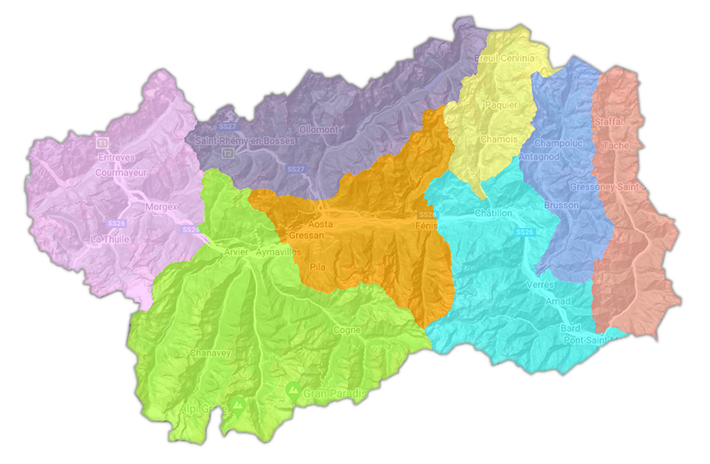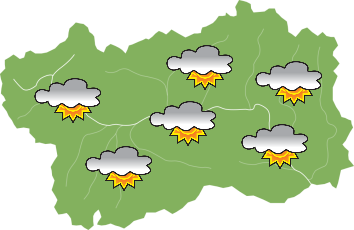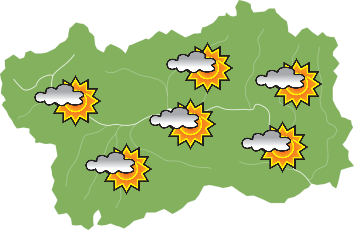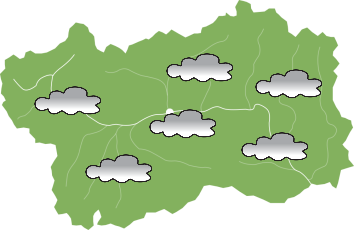Description of the route
Within a relatively tight portion of territory, the head of Val di Rhêmes has a several reasons for being of exceptional value from a geological and geomorphological point of view: a dolomitic landscape that is unique to the whole of Valle d’Aosta, the testimony of the activity of the Quaternary glaciers associated with forms of the periglacial sphere and a spectacular ravine inscribed by the Dora river of Rhêmes, situated a little upstream from the Benevolo mountain refuge.
At the head of Val di Rhêmes, a backdrop characterised by a calcareous-dolomitic environment that is unique throughout Valle d’Aosta, opens up, it acts as a backdrop to geomorphological elements belonging to the periglacial sphere, to recent and past glacialism and to water erosion. Among these shapes, two in particular are quite interesting: the rock glacier and the Fond ravine.
The rock glacier, literally “glacier made of stone”, is the most evident shape associated with the periglacial sphere and it presents itself as a large detrital flow situated eastwards with respect to the Benevolo mountain refuge, along the western slope of Punta Paletta. The peculiarity of this rock glacier is associated with the fact that in its front section, it surpasses a moraine belonging to the final phases of the Quaternary glaciations more correctly called “late-glacial” that is, part of that lapse of time somewhere between 18,000 and 11,500 years ago.
The Fond ravine is, on the other hand, a splendid example of fluvial erosion. This shape owes its high regard from the point of view of the landscape, to the type of rock in which it is set, consisting of the most beautiful outcrops of shallow marine deposits present in the region. This sector, which partially enters into the boundaries of the Gran Paradiso National Park, is therefore particularly rich from a geological-geomorphological point of view and it offers countless starting points from which to personally touch on various aspects of the fascinating history of the Earth.
How to get there:
Coming from Aosta from the S.S. 26, having overtaken the inhabited area of Villeneuve, take the crossroads for Val di Rhêmes; travel through the entire valley (approximately 20 km) as far as Thumel, beyond Rhêmes-Notre-Dame. Park in the large car park situated a short distance from the end of the paved road and from here, proceed on foot. From here follow the signposts indicating the “Itinerary” of the visit to the geological site.
TECHNICAL NOTES
Altitude: 1879 m - 2650 m above sea level
Overall duration of the tour: 1 day
Recommended period: summer, autumn.
Timing:
district Thumel - Benevolo mountain refuge: 1 hour 30 minutes.
Benevolo mountain refuge - rock glacier: 45 minutes.
Benevolo mountain refuge - Fond ravine: 40 minutes.
Benevolo mountain refuge - rock glacier - Fond ravine: 1 h 30’.
The times take into account only the time required to reach the geological sites, the time dedicated to observation is not included.
Itinerary:
From Thumel, having left the car, proceed along the paved road for approximately 200 metres and then follow the trail marker for the Benevolo mountain refuge. From the Benevolo mountain refuge it is possible to articulate the itinerary on the basis of the type of visit that you wish to undertake, in fact, it is possible to limit your visit to the rock glacier, the ravine or both. To reach the rock glacier from the mountain refuge, go onto the orographical right of the slope, towards the Lavassey and Paletta points, following itinerary 13 B (indications on a boulder for Col Basei and Col Nivoletta) for the initial part, as far as Tramail de Basei where the trail branches off. Follow the itinerary, which goes uphill steeply, having surpassed this section, proceed along flatland for approximately 50 m and then abandon the trail and go straight ahead for approximately 5 minutes along grassy slopes, until you reach the front of the rock glacier. From here, the observation itinerary of the geological site begins, in which two preferential points can be highlighted: one is on the rise immediately north of the rock glacier, the other one is on the rise to the north-west, which faces out over the small damming plain that formed between the late-glacial moraine and the rock glacier. To proceed and visit the Fond ravine there are two possibilities. If you do not cross the rock glacier, you should return to Tramail de Basei and from here take itinerary 13 B which unwinds along the original glacial valley floor. If you cross the rock glacier on the other hand, go down along the grassy slopes in the direction of the incision. The ravine observation point consists of a tabular rocky outcrop on the right hand edge of the incision. For those of you who wish to appreciate the rock glacier in its entirety, it is possible to take the trail that leads to lake Golettaz, on the opposite slope.










